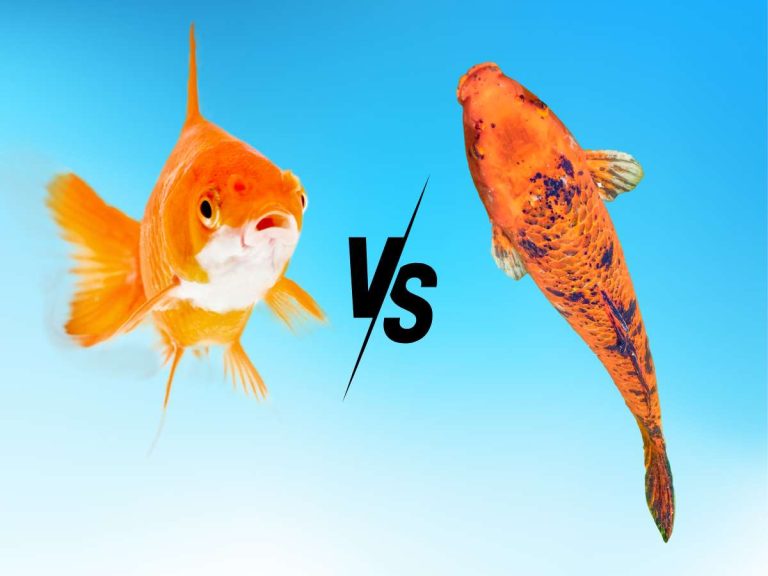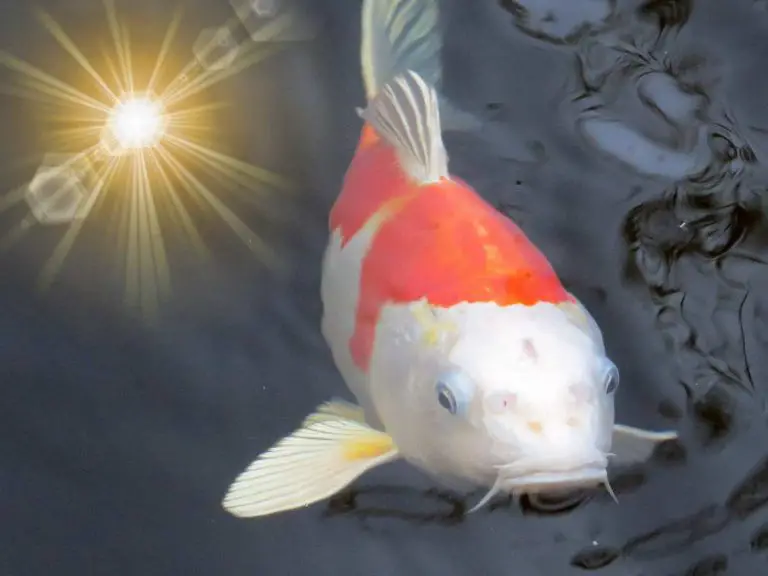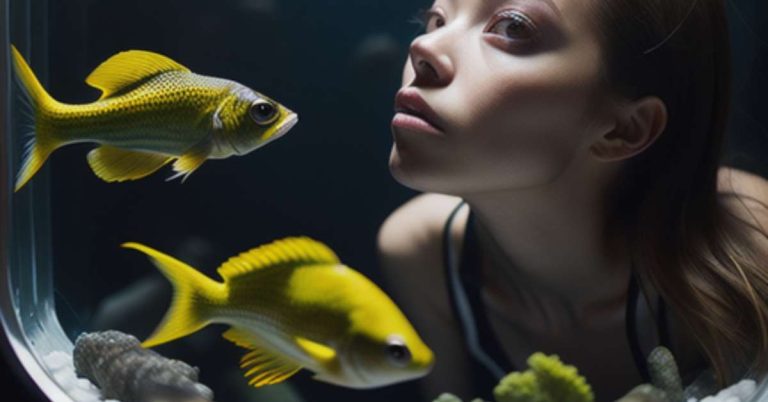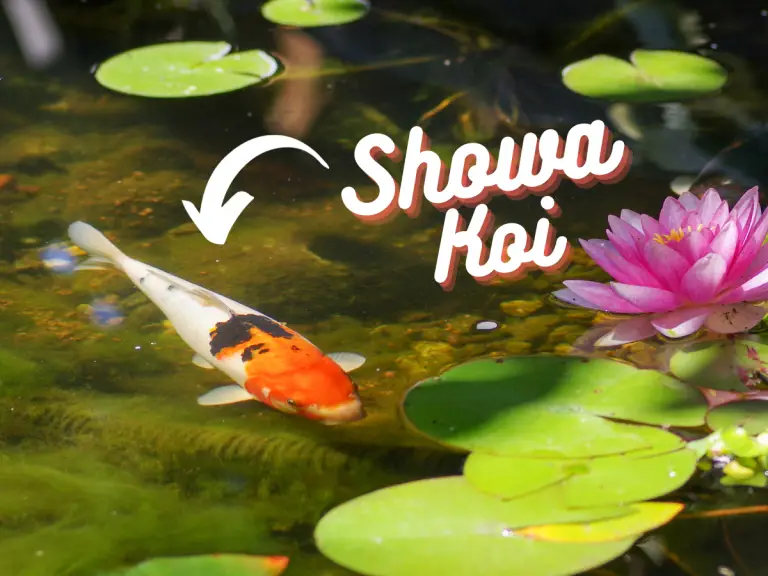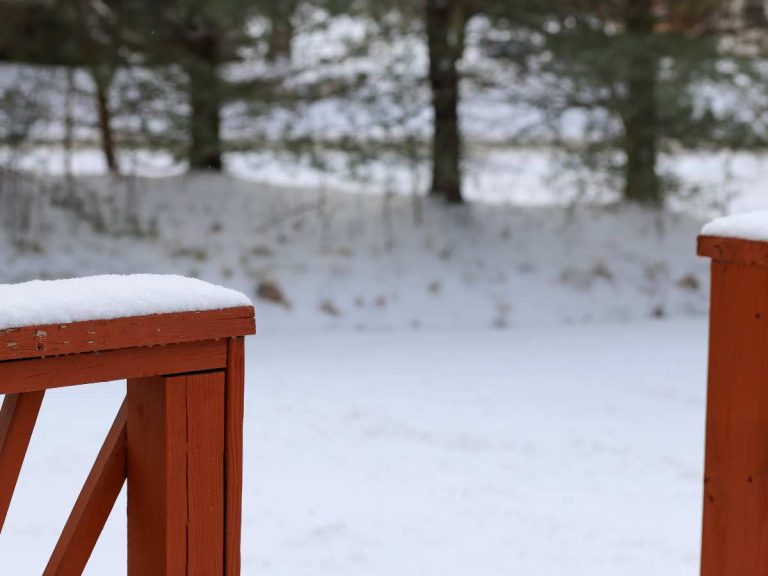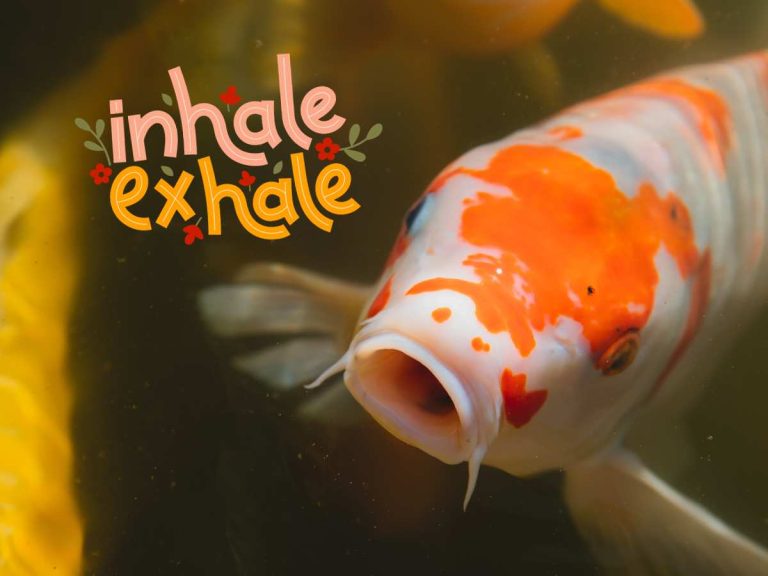Koi Pond Design Ideas: Inspiration & Advice For Creating The Perfect Koi Pond Oasis
Looking for inspiration for your koi pond design? In this article, we’ll provide you with tons of koi pond design ideas and tips to help you create a visually appealing and functional space for your koi fish.
Discover different styles, layouts, materials, and features that you can incorporate into your koi pond, as well as maintenance tips and ways to enhance its aesthetics.
Keep reading for inspiration and advice on how to transform your pond into a stunning centerpiece for your outdoor space!
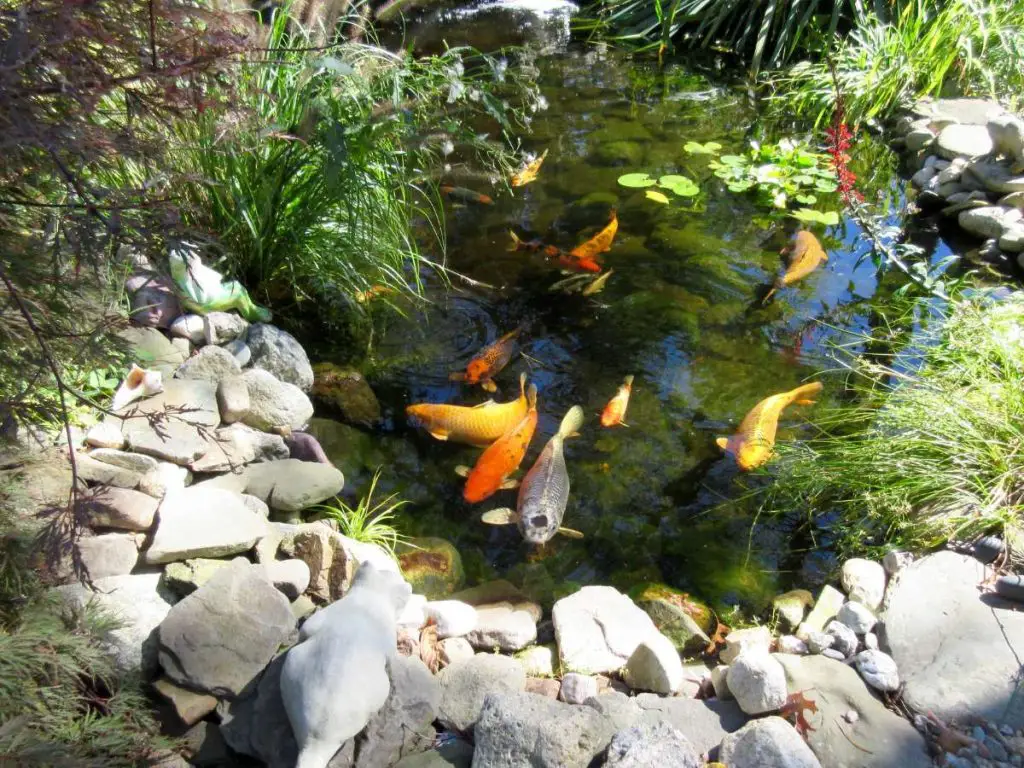
Related Post: 51 Backyard Pond Ideas
Koi pond landscaping ideas
When it comes to designing your koi pond, landscaping plays a crucial role in creating a visually appealing and harmonious space for your fish. Here are a few ideas to help you transform your koi pond into a stunning oasis.
Incorporating rocks and stones
Rocks and stones not only add visual interest to your koi pond, but they also serve practical purposes. They provide hiding spots for the fish, create a natural-looking environment, and help stabilize the water temperature. You can choose from a variety of sizes, shapes, and colors to create a unique and pleasing aesthetic. Remember to arrange them in a way that allows for easy access to the pond for maintenance purposes.
Adding water plants for natural filtration
Water plants not only enhance the beauty of your koi pond but also help maintain water quality. Floating plants, such as water lilies and lotus, provide shade and help regulate the temperature. Submerged plants, like waterweed and anacharis, absorb excess nutrients and oxygenate the water. Emergent plants, such as cattails and irises, provide natural filtration and create a habitat for beneficial organisms. Be sure to choose plants that are compatible with your climate and the specific requirements of koi fish.
Creating a waterfall or stream feature
One of the most captivating elements you can add to your koi pond is a waterfall or stream feature. The sound of flowing water not only adds a soothing ambiance to the space but also helps aerate the pond and improve water circulation. You can create a natural-looking waterfall by arranging rocks and stones in different sizes and shapes, or opt for a more modern and sleek design using concrete or glass panels. Regardless of the style you choose, make sure the water flow is gentle enough for your koi fish to swim comfortably.
Koi pond construction tips
Building your own koi pond can be an exciting and rewarding project. Here are some tips to help you construct a beautiful and functional space for your koi fish:
Determining the ideal size and location
Before you start digging, it’s important to consider the size and location of your koi pond. A general rule of thumb is to have a pond that is at least 3 feet deep, as this will provide enough depth for the koi to swim and thrive. Additionally, the deeper the pond, the more stable the water temperature will be. As for the size, it’s recommended to have a pond that is at least 8 feet long and 6 feet wide, which will give your koi plenty of space to grow.
When choosing a location for your pond, make sure it receives a good amount of sunlight for the plants and fish, but also has some shade to prevent excessive algae growth. It’s also important to consider the proximity to trees, as falling leaves can create additional maintenance and water quality issues.
Choosing the right pond liner materials
The pond liner is a crucial element in your koi pond construction, as it prevents water from seeping into the ground. There are different types of pond liners available, including PVC, EPDM rubber, and concrete. PVC liners are more affordable and easy to install, but they may degrade over time and need to be replaced. EPDM rubber liners, on the other hand, are more durable and long-lasting, but they can be more expensive.
If you prefer a more natural look, you can also consider using a concrete pond. However, keep in mind that concrete can be more difficult to install and may require additional reinforcement to prevent cracking. Whichever liner material you choose, make sure it is fish-safe and resistant to UV rays.
Installing proper filtration and water circulation systems
Having an efficient filtration and water circulation system is essential for maintaining a healthy and clean pond environment. There are different types of filtration systems available, including biological filters, mechanical filters, and UV clarifiers. Biological filters help to break down fish waste and maintain the nitrogen cycle, while mechanical filters remove debris and particles from the water. UV clarifiers use ultraviolet light to remove algae and prevent green water.
In addition to filtration, a water circulation system is important to keep the water well-oxygenated and prevent stagnation. This can be achieved through the use of pond pumps, waterfalls, or fountains. Make sure to choose a pump that is appropriate for the size of your pond and consider the noise level and energy consumption.
Koi pond design inspiration
Traditional Japanese-style koi pond designs
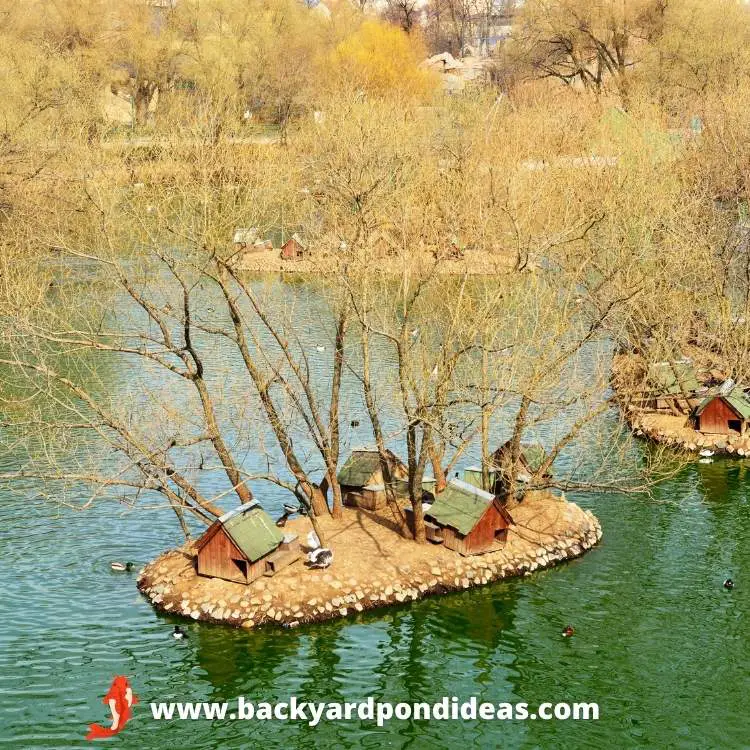
If you’re a fan of Japanese culture and aesthetics, then a traditional Japanese-style koi pond design might be perfect for you. These designs often feature a tranquil and minimalist approach, creating a serene and peaceful environment for your koi fish.
One key element of a traditional Japanese-style koi pond is the use of natural materials, such as bamboo, stone, and gravel. You can create a beautiful pathway around your pond using bamboo or stone stepping stones, and incorporate gravel or pebbles into the pond’s border for added texture and visual interest.
Another important feature is the use of water plants like water lilies and lotus flowers. These plants not only add beauty to the pond, but they also provide shade and protection for your koi fish. Plus, their roots help in maintaining the overall water quality.
Modern and contemporary koi pond designs
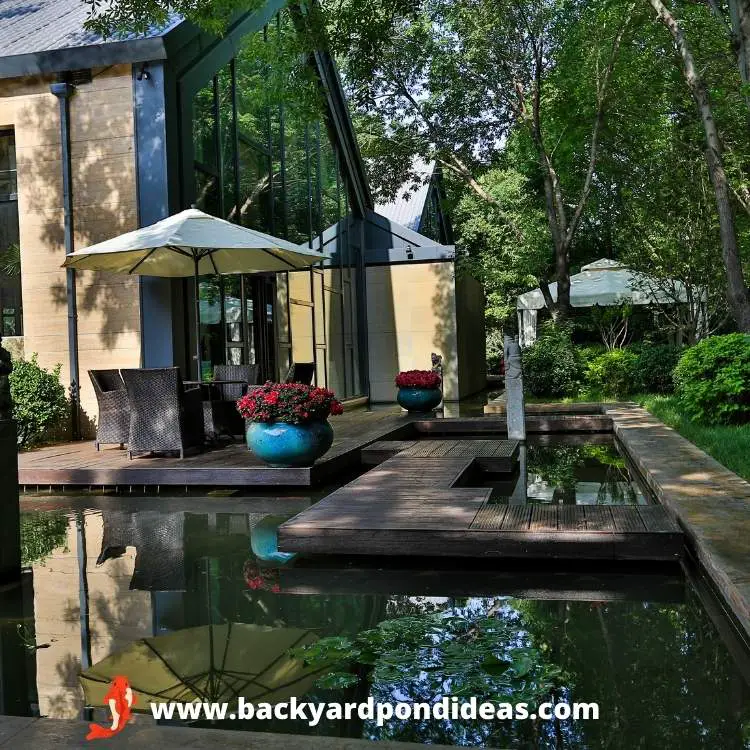
If you prefer a more sleek and contemporary style, then a modern koi pond design might be more appealing to you. These designs often feature clean lines, minimalist features, and a focus on simplicity and functionality.
One popular trend in modern koi pond design is the use of glass or acrylic viewing windows. These windows allow you to get an up-close and personal view of your beautiful koi fish, creating a unique and immersive experience. Additionally, they add a touch of modern elegance to the overall design.
Another feature commonly found in modern koi pond designs is the use of lighting. Strategically placed LED lights can highlight specific areas of the pond and create a stunning visual effect during nighttime. This adds an extra layer of sophistication and ambiance to your outdoor space.
C. Tropical-themed koi pond designs
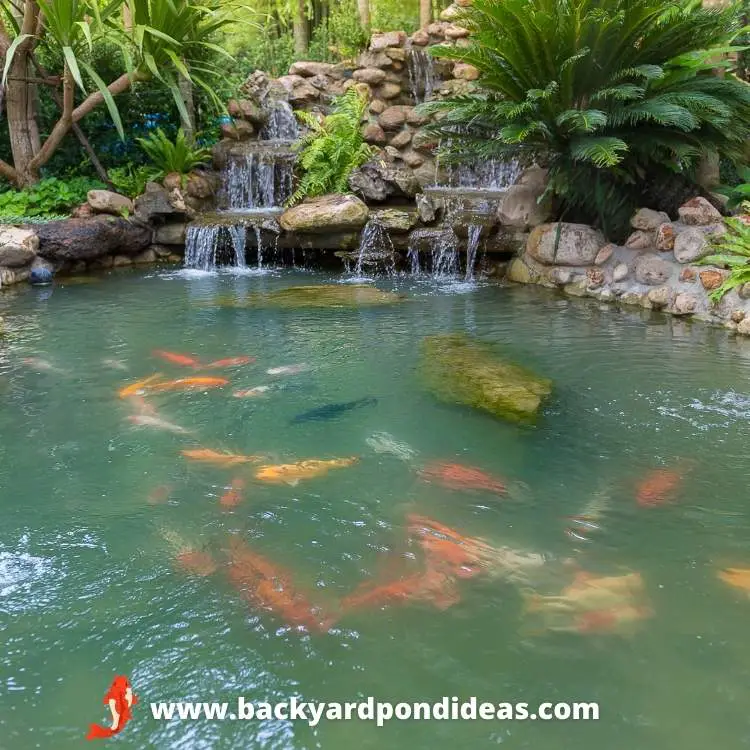
If you want to create a vibrant and exotic atmosphere around your koi pond, then a tropical-themed design might be the way to go. These designs often incorporate lush greenery, colorful flowers, and unique decorative elements.
One popular landscaping choice for a tropical-themed koi pond is the use of palm trees and tropical plants. These plants create a lush and tropical ambiance, providing shade and a sense of privacy for your koi fish. Additionally, they can attract beautiful butterflies and birds to your garden.
Another way to enhance the tropical theme is by incorporating decorative elements like tiki statues or bamboo water features. These elements add a touch of the exotic and create a fun and playful atmosphere around your koi pond.
Best materials for a koi pond
When it comes to building a koi pond, choosing the right materials is crucial for creating a safe and long-lasting habitat for your fish. Let’s take a look at some of the best materials you can use for your koi pond.
Comparing different pond liner materials
One of the most important decisions you’ll make is selecting the right pond liner. There are several options available, each with its own benefits and drawbacks.
- EPDM rubber liners: These are popular due to their durability and flexibility. They are resistant to UV rays and can withstand extreme temperatures. However, they can be more expensive compared to other options.
- PVC liners: PVC pond liners are more affordable and easy to install. They are also resistant to punctures and tears. However, they may not be as long-lasting as EPDM liners.
- Concrete/shotcrete: If you’re looking for a more permanent solution, concrete or shotcrete can be a great choice. It provides a solid foundation and can be customized to any shape or size. However, this option can be more expensive and requires professional installation.
Selecting suitable rocks and stones
The choice of rocks and stones in your koi pond can greatly impact its aesthetics and water quality. Here are some factors to consider when selecting the right ones:
- Avoid sharp edges: Koi fish can easily injure themselves on sharp-edged rocks, so it’s important to choose smooth, rounded stones.
- Size matters: Opt for larger rocks that won’t be easily displaced by the movement of the fish. This will help maintain the overall structure and stability of the pond.
- Choosing the right type: Natural rocks, such as slate or granite, are excellent choices as they provide a natural appearance. Avoid using limestone or marble, as they can alter the pH levels of the pond water.
Choosing the right plants for the pond ecosystem
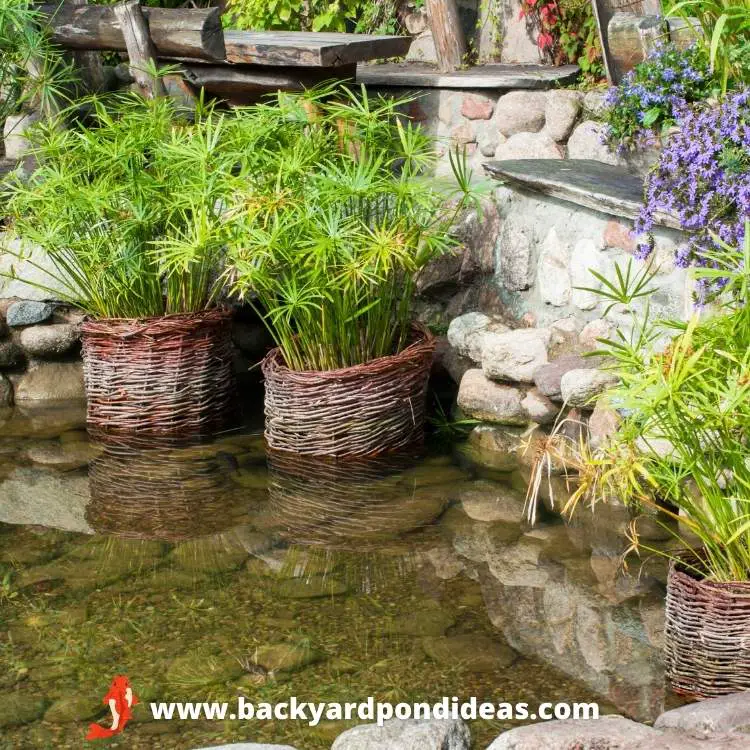
Adding plants to your koi pond not only enhances its beauty but also plays a vital role in maintaining water quality. Here are some plant options suitable for koi ponds:
- Water hyacinth: These floating plants not only provide shade but also help reduce algae growth by absorbing excess nutrients from the water. They also offer a safe haven for fish during the hot summer months.
- Water lilies: These elegant plants not only add color to your pond but also provide shade and shelter for the fish. They also help oxygenate the water and provide a breeding ground for insects, which koi fish love to eat.
- Water lettuce: Similar to water hyacinth, water lettuce acts as a natural filter by absorbing excess nutrients. It also adds a unique texture to your pond with its long, flowing leaves.
Maintenance tips for a koi pond
Maintaining a koi pond is essential to keep your fish happy and healthy. Regular maintenance will help prevent water quality issues and ensure a visually appealing pond. Here are some key tips to help you maintain your koi pond:
Regular water testing and treatment
Regularly testing your pond water is crucial for monitoring its quality. You should check the pH levels, ammonia, nitrite, and nitrate levels to ensure they are within the appropriate range for koi fish. Invest in a reliable water testing kit designed specifically for ponds. If you notice any abnormalities, take immediate action to correct the water conditions.
Cleaning and removing debris
Regularly cleaning your koi pond will help remove excess debris, such as fallen leaves, twigs, and uneaten fish food. Use a pond net to skim the surface and a pond vacuum to remove debris from the bottom. This will prevent the build-up of organic matter that can degrade water quality and harm your fish. Take care not to disturb the fish while cleaning.
Seasonal tasks and considerations
Maintaining a koi pond also involves taking seasonal factors into account. During the summer months, it’s important to monitor water temperature and oxygen levels, as koi fish are more active and require more oxygen. This can be achieved by adding an oxygenating device, such as a pond aerator or a water feature that promotes oxygen exchange.
In the fall, you should net your pond to prevent leaves from falling into the water. Decomposing leaves can release harmful substances and cause water quality issues. Additionally, consider using a pond heater or de-icer during the winter to prevent the water from freezing completely and suffocating the fish.
By following these maintenance tips, you can ensure a clean and healthy environment for your koi fish. Remember to observe your fish regularly and pay attention to any changes in behavior or appearance, as this can indicate potential health issues. With proper care, your koi pond will provide years of enjoyment and beauty.
Enhancing the aesthetics of a koi pond
| Enhancement Type | Description | Additional Ideas & Tips |
|---|---|---|
| Lighting | Soft lights to illuminate the pond during nighttime. | Use underwater LED lights for a shimmering effect. Solar-powered lights can be eco-friendly and efficient. |
| Decorative Features | Statues, water fountains, and other eye-catching elements. | Consider adding a bridge for a traditional touch. Wind chimes can add an auditory element to the ambiance. |
| Natural Elements | Incorporation of rocks, wood, and other natural materials. | Use pebbles for the pond floor for a natural feel. Plant tall grasses or reeds at the edges for privacy. |
Using lighting to create ambiance
One fantastic way to enhance the aesthetics of your koi pond is by using lighting to create a magical ambiance. Imagine sitting beside your pond on a warm summer night, with soft, warm lights gently illuminating the water. It creates a peaceful and enchanting atmosphere that adds a touch of beauty to your outdoor space.
Adding decorative features, such as statues or water fountains
If you want to take your koi pond’s aesthetics to the next level, consider adding decorative features like statues or water fountains. These eye-catching elements can serve as focal points and instantly elevate the overall design of your pond. Choose statues that complement your theme, whether it’s a classic Buddha statue for a Zen-inspired pond or a playful animal sculpture for a whimsical touch.
Incorporating natural elements, like rocks and wood
An easy and effective way to enhance the natural beauty of your koi pond is by incorporating natural elements like rocks and wood. Arrange large rocks or boulders strategically around your pond to create a visually appealing and more natural look. Additionally, adding floating logs or placing wooden benches near the pond can provide a rustic and charming vibe to the entire area.
Final Thoughts
After diving into the world of koi pond design, we’ve covered a lot of ground. Let’s quickly recap the main points discussed:
- Incorporating rocks and stones, water plants, and waterfall features can enhance the landscaping of your koi pond.
- Determining the size and location, choosing the right pond liner materials, and installing proper filtration and water circulation systems are essential for successful pond construction.
- Whether you prefer traditional Japanese-style, modern and contemporary, or tropical-themed designs, there’s inspiration for everyone.
- When it comes to materials, comparing pond liner options, selecting suitable rocks and stones, and choosing appropriate plants are key considerations.
- Maintenance tips include regular water testing and treatment, cleaning and debris removal, and seasonal tasks.
- To enhance the aesthetics of your koi pond, consider using lighting, adding decorative features, and incorporating natural elements.
So, armed with inspiration and knowledge, it’s time to bring your dream koi pond to life. Exciting times lie ahead! Remember to design a visually appealing and functional space for your koi fish while considering their needs. Good luck, and enjoy the process of creating your own little slice of pond paradise.
Related Questions
Can I keep other fish with my koi in the same pond?
Yes, you can keep other fish species with your koi in the same pond. However, it is important to ensure that the other fish species are compatible with koi and have similar water requirements. Some suitable fish companions for koi include goldfish, comets, and shubunkins. Make sure to research the specific needs of the fish species you plan to introduce to ensure they can coexist harmoniously in your koi pond.
How deep should my koi pond be?
The ideal depth for a koi pond is generally a minimum of three to four feet. This depth provides the necessary space for koi to swim and grow comfortably. Additionally, a deeper pond helps to stabilize water temperature, prevent excessive algae growth, and protect the fish from predators. Keep in mind that specific depth requirements may vary depending on your climate and the size of your koi. Consult with a professional or do thorough research to determine the optimal depth for your koi pond.

